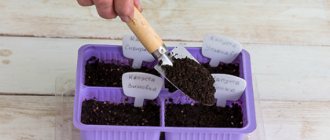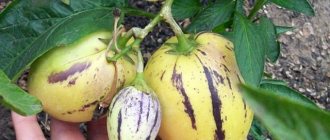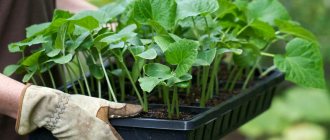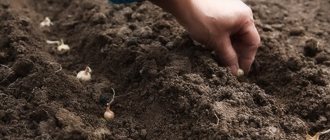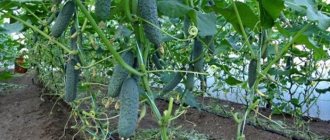Balcony miracles are dwarf tomatoes that, with the right choice of seeds, can be grown at home on a windowsill. The plant takes up little space, bears fruit well, is easy to care for, and takes root well in flower pots. A distinctive feature is the ability to freeze fruits for the winter, juicy pulp and pleasant taste.
Tomato seeds Balcony miracle
Balcony miracle tomatoes have a sweet and sour taste
Tomato bush Balcony miracle with bunches of tomatoes
Description and characteristics of the variety
Externally, it is a small bush with clusters of small, deep red tomatoes that reach a height of 40 cm. You can get up to 2 kg of ripe fruits from one plant. There are cases when the height of the bush reached 50-60 cm, and the yield indicator was 3 kg.
The tomato stem is single and strong, the ribbed leaves are dark green. The plant itself is compact, does not take up much space on the balcony, and bears fruit twice a season even in poor lighting and close proximity. Small flowers are collected in inflorescences of several pieces.
Fruit
Balcony Miracle tomatoes grow in small clusters of 5-8 pieces. The fruits are small, round, dark red in color without impurities, weigh from 15 to 40 g, have no ribbing or specific taste. Tomatoes have a sweet and sour taste, elastic flesh and smooth skin.
Application area
Tomatoes are used fresh for making sauces and salads. If desired, they can be preserved and recycled. When salting and pickling, the appearance and taste of the fruit do not deteriorate. The tomatoes remain whole, firm and juicy.
Balcony Miracle tomatoes are not suitable for sale, since the harvest is not rich when grown on a balcony. Small, bright red tomatoes are often grown for personal use.
Productivity and fruiting
From the moment of planting to the first harvest, 90-100 days pass (this is a mid-season variety). The yield is high, but the size of the fruits is insignificant, reaching 1.5-2 cm in diameter. Up to 2 kg of tomatoes can be harvested from one bush, but this is subject to the rules of growing and caring for plants.
Resistance to diseases and pests
Balcony Miracle tomatoes are resistant to late blight, and the risk of fungal diseases is minimal. The danger for the plant is spider mites, due to which the leaves and stem are covered with a velvety coating.
You can control pests using home methods, for example, using onion or garlic infusion or milk-soap mixture for spraying. In advanced cases, it is better to immediately buy fungicidal preparations at the pharmacy and spray the vegetative system.
Soil selection
Soil for tomatoes
Prepared soil in a balanced composition is offered in many specialty stores, commercial markets and simply in hardware departments. If you wish, you can prepare your own plant mixture. When buying it from traders, it would be useful to read its composition. It should consist of:
- Compost;
- Soil from a garden where nightshade crops (bell peppers, tomatoes, etc.) did not grow;
- Ripe humus;
- Sand.
In proportion, the components are added as follows: 1:1:1:0.3. For one bucket of such soil, one tablespoon of superphosphate and the same amount of ammonium nitrate are added for growth. This composition needs to be prepared six months before the time when you need to plant tomatoes. For example, we prepare the soil in the fall for its use in the spring. Store in ventilated bags or linen bags. Don’t forget to moisten it periodically if the room is dry.
Advantages and disadvantages of the variety
These decorative tomatoes on the windowsill attract attention. They fit harmoniously into the collection of indoor plants, and at the same time give a good harvest.
List of advantages of the Balcony Miracle variety:
- early maturation;
- decorativeness, compactness of bushes;
- rapid fruit set;
- no need for pinching, gartering, or bush formation;
- pleasant taste, attractive appearance of fruits;
- ease of care;
- stable immunity;
- possibility of obtaining 2 harvests;
- versatility of fruits;
- growing in greenhouses and open ground.
The tomato deserves only positive reviews from vegetable growers and consumers, but still the Balcony Miracle variety has one drawback - low yield.
Growing tomatoes Balcony miracle
To ensure that tomatoes ripen in the spring, sow the seeds in December-January. You can immediately choose a wooden box or large pots, because the grown seedlings do not need to be planted. Many vegetable growers use cut-off 5-7 liter bottles as containers.
To grow tomatoes at home, observe the following conditions:
- Choose a large pot for the plant.
- Prepare fertile soil that is superior to garden soil.
- Provide the plant with access to light.
- Follow the feeding regime.
If all requirements are met, you can get your first harvest within 3 months.
Seed preparation
Buy seeds from trusted producers - the fruiting of the variety depends on this. Before planting, examine each grain; treat whole specimens with a pale pink solution of potassium permanganate or Fitosporin.
Alternatively, wrap the seeds in damp gauze to allow them to germinate, then plant them in the ground. You don’t have to do this, since Balcony Miracle tomatoes grow well from dry seeds, the main thing is to follow the rules of care and planting.
Planting seeds for seedlings
If the seeds are ready to plant, start preparing the soil. In 3-4 days, distribute the soil into cups or use another container, fill with warm water. Plant seeds in the following sequence:
- Make a hole in the pot to drain the water, fill it with loose and nutritious soil, and mulch.
- In a large container for future tomato seedlings, make small depressions (up to 2 cm) at a distance from each other.
- Place several seeds in each hole to a depth of 1-1.5 cm, cover with fresh soil.
- Cover the pots (containers) with polyethylene and put them in a dark, warm place for several days.
- When the first shoots appear (after about 3 days), remove the film and move the seedlings to a well-lit place.
- Water the plant regularly with warm water so that the root system strengthens and grows faster.
Seedling care
Follow these recommendations for caring for seedlings:
- Tomatoes need light. The place in which the seedlings are located should be well lit. If there are not enough natural sources, use lamps to illuminate the seedlings. In poor lighting conditions, the fruits do not ripen well and the yield decreases.
- Regular watering. Spray the seedlings with a spray bottle in the morning and evening. Maintain a humidity level of 65-70%. The plant does not tolerate drafts, so avoid their presence in the room with seedlings.
- Temperature conditions. Seedlings grow better in warm conditions. Ensure the room temperature is 19-20 degrees, avoid sudden changes. At night, store the seedlings at 16 degrees.
Soil selection
Seed growth depends on the quality of the soil. Buy a nutrient mixture for tomatoes at a specialty store or prepare it yourself. In the latter case, mix peat, humus and turf soil in equal proportions. Add 500 ml of ash and 2 matchboxes of superphosphates to 1 bucket of the resulting mixture.
The optimal soil for planting seeds is black soil with humus in equal proportions. Add superphosphates, urea or ammonium nitrate, ash or potassium supplements to the substrate for greater fruiting.
Transplanting seedlings
If the tomatoes are planted in a large container or separate pots, you should not replant them. Even in close proximity, the seedlings feel comfortable and bear fruit in a timely manner even at home.
When 3-5 leaves appear, it is allowed to replant the plant in open ground or another pot, depending on future goals. Water the soil well first so that it can easily separate from the walls of the container.
Plant the plant itself in the center of the pot, add a little fertile soil to the sides for fixation. The same manipulations are needed when planting Balcony Miracle tomatoes in open ground, while the distance between neighboring plants should be 25-30 cm. Water the seedlings immediately.
Selection of capacity
Containers for germination
We will need separate small containers or cups for germinating seeds. To avoid mechanical damage to delicate sprouts and a weak root system during replanting, immediately place the hatched seedlings, 1 piece at a time, in one separate cup. Peat containers are available for sale, from which you do not need to remove rooted seedlings.
If you decide to germinate seedlings in plastic cups, then put small plastic bags in each of them. This is done so that when transplanting it is convenient to remove the rooted sprout along with the soil. By pulling the top of the bag with both hands, you can easily remove the planting material from the container.
Both for open ground and for balconies, sowing is carried out in early March or at the end of February. After two months (55-60 days), at the beginning of May, you can transplant the seedlings into the garden bed. In greenhouse conditions or for a loggia, earlier sowing is also allowed - at the beginning of February, or later - at the end of May. In this case, ripening will either be delayed or occur earlier. The average ripening time varies from 105 to 115 days. It is easy to count the given period from the time of planting and go to the time of harvest. Now you have learned the most productive way to grow seedlings until they are planted in large bowls. Now let's talk about suitable soil.
Features of growing at home
Tomatoes bear fruit well in pots on the windowsill; the main thing is to provide them with proper care. Basic rules for vegetable growers:
- Choose 3 liter pots.
- Place drainage at the bottom, to a height of 5 cm, so that the soil can breathe.
- Fill the pot with nutritious soil and loosen it.
- Plant seeds or seedlings and water.
- In the future, water the plant once a week.
Tomato care
The plants are unpretentious in care, but for a rich harvest it is better to take care of their maintenance in a timely manner. We need warmth, light, fertilizing and regular fluffing of the soil.
Valuable recommendations from experienced vegetable growers:
- Maintain the air temperature at 22 degrees during the day and 16 degrees at night.
- Ventilate the plant by periodically shaking its leaves.
- Water the bushes regularly so that a crust does not appear at the base, interfering with oxygen access to the root system.
- If desired, use mineral fertilizers and fertilizers.
- At the first symptoms of disease, start treatment in a timely manner.
Caring for mature plants
Before growing tomatoes on a window, you need to make sure there is a sufficient level of light. If there is insufficient lighting, the plants will stretch out and the yield will decrease significantly. South-facing windows are best suited for placing pots of tomatoes. Plants will do well on them without any additional lighting.
Watering adult tomato bushes is carried out as the top layer of soil dries. In this case, flooding or severe drying out should not be allowed. When under stress, plants can drop flowers and ovaries, which will significantly reduce yield.
As soon as flower clusters begin to form on the tomatoes, they are fed with phosphorus-potassium fertilizer. For example, you can use potassium monophosphate. It promotes more abundant flowering. In the future, it is recommended to use only organic matter for fertilizing. This will reduce the risk of nitrate accumulation in fruits.
Advice! The harvest is harvested as it ripens. Ripe fruits should not be left on the plants, as this will inhibit the formation of new flower clusters.
Watering and fertilizing
After planting in open ground or a permanent pot, water the plants once a week. Check the soil regularly to ensure it does not become crusty. Make a hole at the bottom of the container and place a tray to drain the liquid.
Use phosphate fertilizers every 15-20 days during the growing season. Additionally, feed the plants with organic fertilizers (after 2 weeks). Nutrients are especially important during the formation of the ovary.
Pollination
When planted in open ground, plants are pollinated by insects and wind. At home, this opportunity is not available, so it is important to artificially create air flow, for example, by shaking leaves or directing it under a working fan.
At temperatures up to 13 degrees, the quality of pollen decreases, and at temperatures above 30 degrees, these grains lose their viability. Therefore, it is not recommended to violate the temperature of the plants.
If desired, pollinate tomatoes manually, using special preparations, a soft brush or cotton pads. The optimal time for artificial pollination is 9-10 am, since pollen ripens at night.
Bush formation
The plant is low-growing, so there is no need for staking it. To prevent all the strength of the tomato from going into the green part of the bush, remove the stepsons, pluck the top when the growth is more than 50 cm. Ideally, stepsons are not required, and the height of the plant should not exceed 40 cm. Otherwise, you can doubt the quality of the seeds.
Fruiting and harvesting
This variety of tomatoes is a mid-season variety; the first fruits can be tasted in the spring (during winter planting). In one season you can harvest 2 crops. Fruiting is moderate - no more than 2 kg comes out from each bush.
If the plant needs nitrogen fertilizer, then during fruiting it is better to exclude this compound from the fertilizing composition, otherwise the yield decreases, the fruits become small and tasteless.
Breeding history
This variety was bred at the end of the 20th century by Russian and German breeders . For this, two groups of varieties were used - some were soft and juicy with fruits with good taste, but were unstable to late blight, septoria and other pests.
The second group of varieties, which included numerous German, French, and Swedish samples, were frost-resistant and disease-resistant, but their fruits were watery and insipid. As a result of numerous experiments over several seasons, an early ripening variety was obtained, suitable for cultivation at home, with pronounced resistance and fleshy, sweet fruits.
Disease and pest control
Like other plants, Balcony Miracle tomatoes are afraid of fungal infection when heterogeneous spots appear on the leaves and stems. Cases are rare, but still occur in vegetable growing. To prevent the disease from spreading to healthy plants, use special preparations according to the instructions.
Potential pests and control methods:
- Powdery mildew . The infection first spreads to the lower leaves. A white coating appears, which is clearly visible against the green background, and gradually makes its way to the top of the plant.
- Black leg . The disease develops when the soil is over-watered, when the root system begins to rot. Infected plants are dug up, neighboring plants are generously treated with fungicides for prevention.
- Whitefly . Small, white, sucking insects appear on tomato leaves, which quickly deplete the leaf structure. Without timely treatment with special means, pests cannot be eliminated.
- Plant aphids . This harmful insect sucks the sap of young plants. First, the leaves curl into a tube, then turn yellow and dry out. For treatment, a soap solution or the drug Komandor is used.
We bring to your attention a video in which an experienced gardener will teach you the tricks of growing a Balcony Miracle tomato:
Reviews of tomatoes Balcony Miracle
★★★★★
Andrey, 45 years old, agriculture, Sochi. I grow Balcony Miracle in open ground.
The tomatoes are small, like cherry tomatoes, but you get more of them from one bush. The plant is prolific, especially if kept warm and watered regularly. Tomatoes are tasty, have thick skin and elastic flesh. My wife uses them whole for preservation. When interacting with vinegar, the tomato does not lose its shape and the skin does not crack. ★★★★★
Inga, 37 years old, secretary, Izhevsk. My Balcony Miracle grows on my windowsill.
The bush is small and bears fruit twice a year. Ripe tomatoes are very tasty, have a pleasant acidity, and you don’t even need to salt them. The plants are unpretentious in care, do not take up much space on the windowsill, and do not need staking. They bear fruit 3 months after planting, the main thing is to water it on time. My children really love this variety of tomatoes; they pick them from the bush themselves. ★★★★★
Angelina, 45 years old, agriculture, Smolensk. I have a couple of Balcony Miracle bushes in my greenhouse.
I believe that this variety is more suitable as an ornamental plant for a windowsill. The fruits are small, and there are not many of them. If I forget to water, the leaves quickly turn yellow. I don’t see the point in growing such tomatoes, except to please my grandchildren with their appearance. The variety is definitely not suitable for sale; you can suffer from growing it. The taste is specific. Hide
Add your review
Tomatoes Balcony miracle is a vegetable garden on the windowsill. With proper watering, fertilizing and loosening the soil, you can get a small harvest and delight yourself with fresh vegetables.
0
0
Copy link
Planting seeds
Before you start planting seeds, you need to make sure they are healthy. Balcony tomatoes produce very small seeds. On sale there are from 10 to 15 pieces per bag, but even with such a small quantity, 2 or 3 empty seeds are often found. There are two ways to recognize their viability:
- Throw the seeds into a glass of water and watch what happens. Dense and healthy ones are heavier than water and will sink to the bottom. And the empty and weak ones will float on the surface. We throw away empty ones and nurture productive ones.
- We wrap the planting material in gauze folded in several layers or a flannel cloth soaked in water. Place the bundle in a plastic bag to prevent moisture from evaporating. We leave it all in a warm place for two or three days. Then we unfold it and observe the appearance of white dots. These points signal the germination of grains and their readiness for planting. If they don’t appear, then you need to wait another 1 or 2 days. The non-appearance of sprouted dots indicates lifelessness of the seeds.


